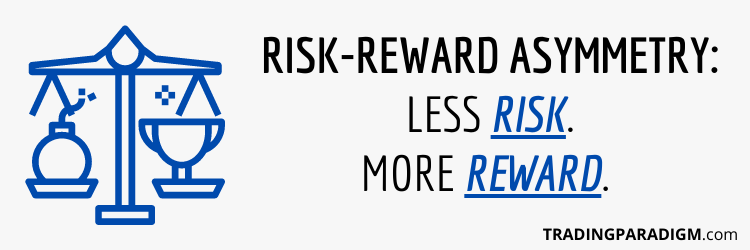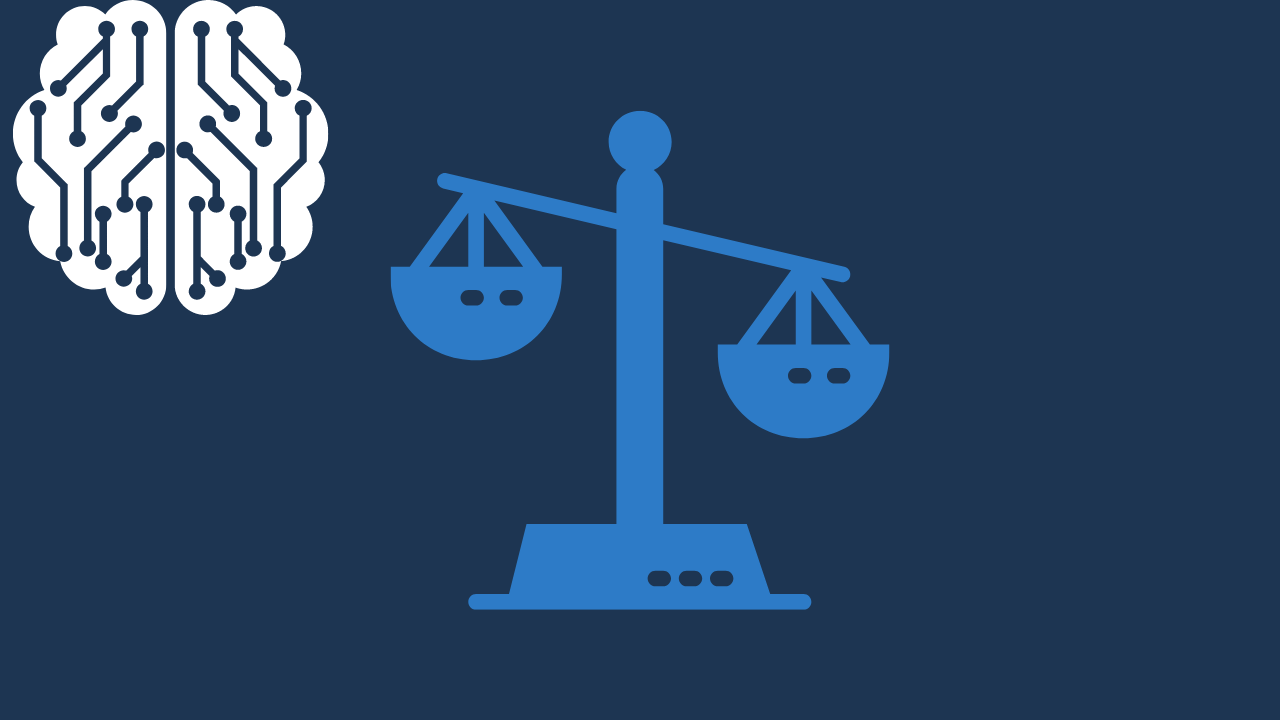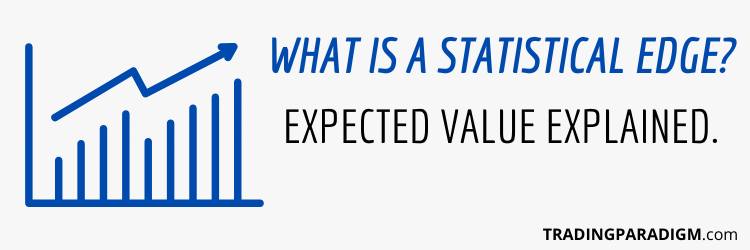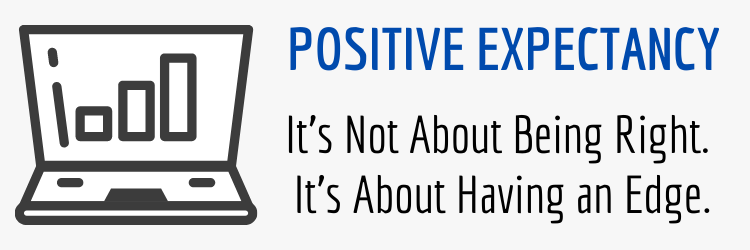What is Asymmetric Risk-Reward – An Imbalance in Potential Loss and Profit:
Asymmetric risk-reward is simply when risk is not equal to reward. For example, a trade that offers a $300 potential profit for $100 of risk has an asymmetric risk to reward ratio of 3:1. Generally speaking, a 3:1 ratio is the “sweet spot” for most traders/investors.
Note: “risk-reward” is the usual way the terminology is stated, but when the numbers are stated – it’s typically the opposite (units of reward first and risk second). So a 3:1 risk-reward ratio means the reward is three times the risk.

The reason for having a higher potential reward in comparison to risk is so that you don’t have to “win” as often on your trades in order to be profitable long-term. With a 3:1 risk to reward ratio, for instance, a win percentage over 25% makes you profitable.
Of course there are trading commissions and fees to consider, so you’d probably have to have a win rate at least a couple percentage points above 25% to actually be profitable. But many highly-profitable traders have win rates in the 40-60% range.
Non-traders, as well as new traders, don’t typically view a 40-60% win rate as “good” because they’d rather be “right” more often (have a higher win rate) and don’t know how the math works. But you can make a lot of money with a 40% win rate and 3:1 risk-reward.
If we plug these numbers into the expected value equation, we see that they produce an expected return of $60 per trade. If you’re a day trader who makes roughly 5 trades per day, this can add up to some real money over the course of a year or two.
Expected Value/Return = (Probability of Winning x Average Win) – (Probability of Losing x Average Loss)
E = (40% x $300) – (60% x $100) = ($120) – ($60) = $60
This doesn’t even consider a potential increase in size – like risking $1K for $3K reward – which would produce an EV of $600 per trade.
Keep in Mind – You Can’t Just Create Risk-Reward Asymmetry Out of Thin Air:
Trading is very subjective. There are millions of market participants using various indicators, strategies, systems, tools, and methodologies across numerous time frames. So nobody can tell you exactly where your stops and profit targets should or shouldn’t be.
But keep in mind that you can’t just create risk/reward out of thin air. It should be based on context (whatever that means to you and your specific trading methodology). Just because a stop and profit target are in place doesn’t mean the potential R/R is “real”.
For example, if I open up my brokerage account and choose a random stock (let’s call it ABC), buy it at market price (let’s say $5), put a stop loss order in at $4, and my take profit at $105 – that would be a massive risk to reward ratio of 100:1. Sounds nice, right?
But is this risk to reward ratio real? Is ABC stock really offering me a 1:100 risk-reward opportunity or am I just “hoping” for a miracle? Is there anything from a technical or behavioral perspective telling me that my profit target is realistically achievable?
So the risk-reward ratio on a given trade isn’t just what you want your stop loss and profit target to be. These exit areas should be based on market-generated information (like key price, volume, and time-based support and resistance levels/zones).
5 Potential Trade Outcomes and the 1 You Need to Eliminate ASAP:
This is a fairly basic concept, but I think it ties in nicely with risk-reward ratios and the expected value formula.
After entering a trade, there are essentially only 5 possible outcomes:
-
Breakeven
-
Small Win
-
Large Win
-
Small Loss
-
Large Loss → ELIMINATE
If you can eliminate #5 (large losses), then you have a much higher chance of being profitable long-term. Of course, doing this is much easier said than done. But it’s extremely important because big losses are detrimental on both a financial and psychological level.
It’s fairly common for traders to look at their personal trading statistics and discover that if they were to just eliminate their large losses (and stop out when those losses were small), then they would actually be profitable. Sometimes it can be that simple.
To Be a Trader is to Be a Good Risk Manager – A Practitioner of Uncertainty:
To wrap things up, most consistently profitable traders implement strategies/systems/methodologies with asymmetric risk-reward.
It’s not required (some traders are profitable with a 1:1 risk-reward ratio), but that means they have to maintain much higher win rates to be profitable (over 50%). And as many with experience trading know, it’s not all that easy being “right” that often.
Many people equate trading to predicting/forecasting. But there’s no way to predict the future with 100% certainty. All we have to work with are probabilities (not certainties) – and then we try to monetize those probabilities through a risk-reward process.
To provide an illustration of what I mean by this, let’s say (theoretically speaking) that based on my data/research there’s a 95% chance of the market continuing to climb higher and just a 5% chance of it descending into a bear market within the next month.
Based on my research, it’s clear that my prediction would be for the market to climb (95% is a high probability). But I haven’t yet considered the potential magnitude of the two moves. What if there’s 50X more profit-potential in the bear market scenario?
If that’s the case, selling the market in this situation (even though there’s only a 5% chance of it working) might actually be worth the risk. So it’s not just the probabilities that matter, but the magnitude of the risk/reward inherent within the situation as well.
Learn More in the Trading Success Framework Course
Written by Matt Thomas (@MattThomasTP)
Related Pages:
- 3 Core Components of a Robust Market Methodology
- What is Profile Trading – Volume Profile & Market Profile
- Day Trading vs. Gambling – Is Day Trading Gambling?
- What is a Statistical Edge in Trading – Expected Value Explained
- What is Trading Expectancy – The Importance of Having a Statistical Edge





Thank you for providing this definition. I am always trying to have the best strategy either in trading, investing, finance or other personal choices in order to have the best outcome in the end. It is definitely important to asses your situation to determine what your comfort zone is. Maybe one day I’ll get back into active trading again. What is the best platform or one you recommend?
Thanks for sharing your thoughts!
To answer your question about what platform is the best, it really depends on what type of platform you’re looking for – there are all kinds of trading platforms (brokerages, newsfeeds, screeners/scanners, education/training, etc.). So if you can provide more details on your trading style (markets, instruments, and timeframes you prefer) and what type of platform(s) you’re looking for, I can probably help with a much more specific answer. But some of my personal favorites are:
Finviz – Stock Screener
Benzinga Pro – Stock Newsfeed
Trade Ideas – Stock Scanner
Edge Clear – Futures Broker
Topstep – Funded Trader Program
2ndSkies Trading – Education/Training
Thomas Kralow – Education/Training
Trade With Profile – Education/Training
Good text for all traders. I think that without risk we cannot progress and make a profit. We need to be careful with that, so as not to fail and lose money. Every pursuit requires risk and don’t think about the reward right away, but invest in yourself and do your best.
Hi Bojana – I appreciate your comment!
I do agree that we make a risk-reward trade-off with every decision that we make/action that we take. The stakes might not directly be “money”, but can also be time, happiness, fulfillment, etc. There’s always some sort of opportunity cost – time or money that could have been devoted elsewhere for a potentially higher return. But the point is that there is no reward without risk – and it’s about taking good, calculated risks instead of bad, impulsive ones. Short-term losses/drawdowns are inevitable, but if we have the probabilities/risk-reward skewed in our favor (and apply proper risk and money management), then we can essentially reduce the risk of ruin and allow the numbers to work themselves out over time. The fast-paced nature of day trading (or other forms of active trading, like swing trading) often tricks people into a short-term mindset, but from a probabilistic standpoint – active trading still requires a a long-term perspective (the law of large numbers).
i understand the concept that your reward must be greater than your risk or a person is simply not going to succeed. The hard part is to determine which investments are worth the risk. For a newbie, that is a high hill to climb, specially, if you have just a little money to invest. Knowing how to get a statistical edge in your investments is huge, and reducing or eliminating large losses are the key. This too, is easy to see. The problem with most first time investors is that they can not maintain even short-term losses and withourt help they simply try something else. No one likes to lose money, but when you have limited resources, it can really be debilatating.
Hi Toplink – I appreciate you sharing your thoughts!
Your reward doesn’t necessarily have to be greater than your risk on each individual trade in order to succeed long-term – it just requires a much higher win rate. But generally speaking, I do think it’s wise for most traders/investors to shoot for at least a 1:2 risk/reward ratio. For newbies with limited capital to trade with, I would recommend a couple things rather than putting their own capital at risk in the markets: validating their approach in a market simulator/demo account and then pursuing a high-quality funded trader program/prop firm. These things can help solve some of the problems related to lack of edge, skill, and capital.
This is a very informative article. It’s excellent for people that are looking into what to trade and invest to consider risk reward. And I totally agree with it all. This is why I never put too much money you need to invest a little first and wait for results before investing more. For example I know of people that invested money all at once and lost everything.
I am fairly new to investing and looking after my own portfolio, so a lot of the terminology is still new to me. I have heard about asymmetric risk reward, but didn’t know what it actually involved. I do have a better understanding of the principles surrounding asymmetric risk reward after reading this post.
At the moment most of my investments are in ETFs and I am not actively trading. So is asymmetric risk reward something that I should be considering when choosing an ETF, or would it be more applicable to actual share trading? Thank you.
Great question!
I wouldn’t say the concept of risk-reward is any more or less applicable depending on the instrument, market, or time frames being traded. It should always be considered whether you’re day trading, swing trading, position trading, or investing in stocks, options, ETFs, futures, etc. But when it comes to the typical passive investor that dollar-cost-averages into a 401K or other retirement account, for example, they’re not really looking into risk-reward. Most people don’t/hardly even know the basics of trading or investing – they’ve just been told that it’s good to invest and their employer offers a retirement plan (and maybe even a company match of some sort) – so why not do it?
But I think there’s more to the risk-reward scenario here that’s not just monetary/financial. When someone chooses to pursue active trading and investing, they’re sacrificing quite a bit of their time, energy, and focus for (hopefully) a much higher financial return. When someone chooses to be a passive investor, however, they can put their time, energy, and focus into other things that they care about – but they shouldn’t expect returns anywhere near those of an elite active trader/investor. So overall, risk-reward is certainly applicable to every trade, investment, and even decision (unrelated to trading and investing) that you make. Time, money, energy, and focus are all resources to be managed wisely.